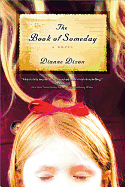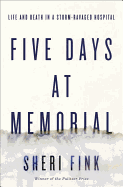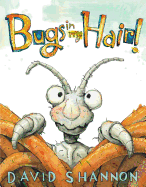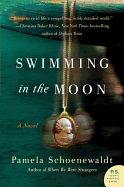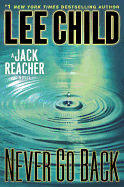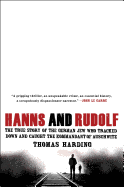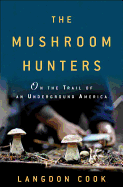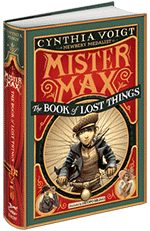Friday, September 13, 2013
Next Thursday, September 19, is International Talk Like a Pirate Day. Here are some books to help you and yours brush up on your lingo and avoid walking the plank.
 In How I Became a Pirate by Melinda Long, illustrated by David Shannon (Houghton Mifflin Harcourt), young Jeremy Jacobs can't resist a pirate crew's invitation to join up, but discovers he's a landlubber at heart (there's no place like home). Lest you think girls have no place among pirates, the heroine of the charming early chapter book Kylie Jean, Pirate Queen by Marci Peschke, illustrated by Tuesday Mourning (Capstone), sets out to prove otherwise.
In How I Became a Pirate by Melinda Long, illustrated by David Shannon (Houghton Mifflin Harcourt), young Jeremy Jacobs can't resist a pirate crew's invitation to join up, but discovers he's a landlubber at heart (there's no place like home). Lest you think girls have no place among pirates, the heroine of the charming early chapter book Kylie Jean, Pirate Queen by Marci Peschke, illustrated by Tuesday Mourning (Capstone), sets out to prove otherwise.
In a similar vein, for readers aged 12-up, orphaned Mary "Jacky" Faber passes for the titular ship's boy in Bloody Jack by L.A. Meyer (Houghton Mifflin Harcourt) and finds herself battling pirates on the high seas. Don't miss the captivating audio version (Listen & Live audio), read by Katherine Kellgren. A new entry in this gender-bending genre is The Very Nearly Honorable League of Pirates #1: Magic Marks the Spot by Caroline Carlson (HarperCollins), reviewed below.
But let's not forget the boys! Intrigue abounds in Jennifer Nielsen's The False Prince, in which four orphans attempt to impersonate the missing Prince Jaron. In the sequel, The Runaway King (both Scholastic), the chosen orphan winds up face to face with the pirates who purportedly dispensed with Jaron. How to Train Your Dragon, Book 2: How to Be a Pirate by Cressida Cowell (Little, Brown) makes the pirate life look like pure fun, as does the highly interactive Pirateology by Dugald E. Steer (Candlewick). For two visually imaginative takes on classics, check out Robert Sabuda's 3-D interpretation of Peter Pan (S&S) and his archnemesis, Captain Hook, and Treasure Island by Robert Louis Stevenson, recently reissued with gorgeous full-color illustrations by N.C. Wyeth (Atheneum). --Jennifer M. Brown, children's editor, Shelf Awareness
The Book of Someday
by Dianne Dixon
Three fascinating stories about three very unusual women from different eras take the scenic route before ultimately converging in Dianne Dixon's debut novel, The Book of Someday.
Dixon's characters are so richly developed it almost feels like a movie could be spilling off the pages. Livvie has moved beyond her abusive and unloved childhood to become an award-winning author. Micah, a statuesque knockout standing more than six feet tall, would attract attention even if she weren't a world-famous photographer. AnnaLee is married to a man so weak and needy she's been secretly selling off her family heirlooms just to make rent. It's unclear what links these women together--until Dixon begins ratcheting up the stakes in this bittersweet story of lost connection.
The tough-as-nails Micah learns she has cancer and begins to try to make reparation to those she hurt during her ambitious rise to greatness. AnnaLee is forced to take in a malicious teenager who threatens to destroy her home life even further. And Livvie is torn between the lying and irresistible Andrew and David, a loving friend who would do anything for her.
Dark secrets arise that will keep readers in suspense until the final pages. Dixon's characters are searching for justice and absolution, but what they find are deeper mysteries that threaten to challenge everything they thought they knew. This haunting tale is an excellent piece of escapism that will put a pang in your heart--and, sometimes, a chill in your bones. --Natalie Papailiou, author of blog MILF: Mother I'd Like to Friend
Discover: A compelling tale of three extraordinary women facing insurmountable odds.
You Knew Me When
by Emily Liebert
Katherine Hill sleeps six hours a night and spends the rest of her time zooming up the corporate ladder. When she's not busy being a hard-as-nails boss, she's running on the treadmill and eating carrot sticks.
In You Knew Me When, Emily Liebert's debut novel, Katherine wasn't always such a perfect, polished pain in the neck. She grew up nerdy yet beloved in a small town in Vermont. After college, she shed 30 pounds, dumped her best friend Laney and rejected the man she loved in one fell swoop when she left for New York in pursuit of a powerful new career.
Katherine is forced to confront her past when a rich aunt dies and leaves her a mansion in her hometown. Liebert is spinning the stuff of fantasy here and it's delicious. What woman doesn't dream of being left a fabulous dwelling full of designer clothes, handbags and shoes? Katherine goes into a tailspin, though, as she must face the still furious Laney, as well as the ex-lover who makes her heart melt into a puddle and the loving father she's barely had time to telephone in the past few years. It's enough to make a girl eat carbs.
Liebert moves back and forth through time, switching points of view from the teenage Laney and Katherine to their present day manifestations. It's a touching yarn, especially when it's revealed that Katherine's beauty and success is matched only by her loneliness. This story about transformation and second chances surely deserves a place in the beach bag. --Natalie Papailiou, author of blog MILF: Mother I'd Like to Friend
Discover: A beach read that insists you can go home again--even if it means facing the heartbroken best friend and former lover you left behind.
Swimming in the Moon
by Pamela Schoenewaldt
As the 20th century begins, 14-year-old Lucia and her mother, Teresa, enjoy a charmed life as servants in a Neapolitan villa, where Teresa soothes their mistress' headaches with her songs. But when Teresa's volatile temper puts them both in danger, they flee to America, settling in Cleveland. Teresa finds factory work alongside other immigrant women, but her beautiful voice soon earns her a place on the vaudeville stage. Lucia, clever and ambitious, studies hard and graduates from high school, dreaming of college. But labor unrest ripples through Cleveland's immigrant community, and Teresa is fighting her own inner demons. Lucia must find a way to care for her mother, pursue justice for her fellow workers and follow her own dreams.
Pamela Schoenewaldt's Swimming in the Moon is an evocative, compelling portrait of immigrant life in the early 1900s. The narrative touches on many issues of the day, including women's suffrage, harassment of female factory workers, mutual distrust among immigrant groups and the often brutal treatment of mental patients. Lucia, Teresa and their circle of female friends represent a wide variety of women's experiences, from independent small-business owners to women who gladly give up factory jobs for marriage and children. Lucia's struggle to balance her bold dreams with social realities, economic limits and her ever-increasing responsibility to her mother will sound achingly familiar to today's women. Intelligent, passionate and familiar, Lucia will inspire readers to cheer her on as she searches for fulfilling work, a happy family and lifelong love.--Katie Noah Gibson, blogger at Cakes, Tea and Dreams
Discover: Schoenewaldt (When We Were Strangers) tells a compelling story about a headstrong Italian singer and her daughter who create new lives for themselves in early 20th-century America.
Let Him Go
by Larry Watson
Larry Watson's sparse language pummels the reader like icy winds racing down a North Dakota highway, conveying the looming consequences of hastily made choices, of passions gone amuck. Let Him Go, Watson's ninth work of fiction, is written in the pithy style of his classic Montana 1948 and American Boy, and set in familiar turf--the high plains of the American West.
George Blackledge walks home for lunch on a chilly September day because his wife asked to use the Hudson that morning. When he finds not the bowl of soup he expected but the car packed with camping gear, he knows Margaret's plan. "With or without you. It's your choice," she says.
The Blackledges had sold the ranch Margaret's forebears founded after their son, James, was thrown from a horse and killed. James's widow, Lorna, and toddler son stayed with the Blackledges, but Lorna soon fell for a Montana cowboy of sketchy repute, and moved on with her new husband and little Jimmy, leaving his grandparents bereft. Now Margaret is determined to persuade Lorna to move back to North Dakota or surrender Jimmy. George doesn't endorse the plan, but can't see Margaret go alone. "He sighs, the deep breath and exhalation of a man about to follow someone onto a narrow ledge."
Like George and Margaret, readers hope for the best and prepare for the worst. The frontier laws of 1951 clash with upright Blackledge morality in an unforgettable conclusion. --Cheryl Krocker McKeon, bookseller, Book Passage, San Francisco
Discover: A mid-century tale of a family struggling for justice from a master storyteller of the American West.
Mystery & Thriller
The Edge of Normal
by Carla Norton
The Edge of Normal, Carla Norton's fiction debut, clearly draws upon the expertise she gained writing Perfect Victim, a 1988 true-crime book about a survivor of kidnapping and captivity. In the novel, kidnapping victim Reeve LeClaire has spent the six years since her escape in therapy and is progressing in tiny, painful increments. The family of Tilly Cavanaugh, another rescued abductee, asks for Reeve's help in beginning their own process of recovery. This mentorship looks like the most challenging task she's been offered in years, but will turn out to be the beginning of another nightmare.
Tilly's kidnapper is behind bars, so why is Tilly still so skittish? What is she not telling the police and district attorney who want to prosecute her case? Pulled into a confidence that may break her, Reeve becomes the only person who can help Tilly and two girls who are still missing.
The reader is privy to the inner workings not only of Reeve's tortured mind, but that of Tilly's kidnapper, so there is less mystery in The Edge of Normal than sheer terror and wild, horrified urgency. Norton's sense of pace is perfect, and her characters draw upon readers' sympathies skillfully. Norton's expert understanding of captivity syndromes goes far beyond Stockholm Syndrome (which, she writes, "isn't actually in the diagnostic manuals"); she renders Reeve and Tilly's experiences visceral and believable, as The Edge of Normal indulges in all the action and adrenaline thriller fans crave before building to an explosive finish. --Julia Jenkins, librarian and blogger at pagesofjulia
Discover: A true-crime journalist shifts to fiction with a disturbing and authentic tale of kidnapping--and recovery.
Never Go Back
by Lee Child
After trying, over the course of several novels, to get to Virginia, Jack Reacher finally makes it there in Never Go Back, the 18th installment in Lee Child's popular series. Reacher had long conversations with Major Susan Turner in 2010's 61 Hours, and, liking her voice, decided to hitch his way to the D.C. area to meet her.
When he gets there, however, Turner is missing, with a shifty colonel in her place. The colonel gives Reacher a surprising order, along with news about two serious charges that could get Reacher arrested. The cases supposedly involve people from his military past, but Reacher can't remember them. Someone powerful is out to get him, but who, why--and what does Turner have to do with it?
But when Jack Reacher is involved, does the plot really matter? Child is a reliable storyteller and Reacher's latest adventure contains the elements fans like best, as Reacher takes on corrupt, powerful people, gets into bone-crushing fights and meets a hot, smart female protagonist who's very good at her job.
There's a small downside to being reliable, though. One subplot suggests Reacher's life might change drastically, but longtime fans will probably guess the outcome--and the coincidence of that subplot is too farfetched. This is the beloved tough guy doing what he does best, though, and fans will probably go anywhere with him. --Elyse Dinh-McCrilllis, freelance writer and editor, blogging at Pop Culture Nerd
Discover: In his latest bone-crushing adventure, Jack Reacher finally meets the woman with the alluring phone voice from 61 Hours.
Biography & Memoir
Hanns and Rudolf: The True Story of the German Jew Who Tracked Down and Caught the Kommandant of Auschwitz
by Thomas Harding
Hanns and Rudolf is a fascinating dual biography of Rudolf Höss, kommandant of Auschwitz, and Lieutenant Hanns Alexander, a German Jew in the British army who captured Höss during the chaos after World War II's end. Thomas Harding, Alexander's great-nephew, chronicles these two lives driven by very different notions of duty and honor. His profile of Höss is especially engrossing; the future architect of the Holocaust's worst extermination camp developed an affinity for nature and horses during his emotionally turbulent early life. Höss's strict religious grooming for a church life fell apart after his own priest betrayed his confessional confidence. At age 14, he joined the German army, fighting throughout the Middle East during World War I, cementing his nationalist fervor and military path.
Hanns Alexander enjoyed a considerably more comfortable early life as the son of a successful Jewish doctor who kept spacious apartments in Berlin. The Alexanders, uprooted by the rise of Adolf Hitler and violent anti-Semitism, barely escaped to London before the worst persecutions began. Harding alternates between Höss's early association with the Nazis, including a close relationship with Martin Bormann and a reverence for Heinrich Himmler, and Alexander's struggle to assimilate into a country suspicious of all German nationals. Alexander enlists with the British army, where his language and detective skills earn him a job hunting Nazi war criminals. Alexander's hunt for Höss is a relatively brief portion of the book, but is no less engrossing than Höss's transformation into genocidal bureaucrat. --Tobias Mutter, freelance reviewer
Discover: A double biography of the kommandant of Auschwitz and the German Jew who brought him to justice.
History
Latino Americans: The 500 Year Legacy that Shaped a Nation
by Ray Suarez
With more than 50 million Latinos living in the United States, Ray Suarez's companion book to the PBS documentary series Latino Americans provides a comprehensive overview of the often ignored historical contributions this vast minority has made. Latinos encompass not only Mexican-Americans but also immigrants from Puerto Rico and Cuba as well as Europe, Africa and Asia--anywhere Spanish is the predominant language.
Latinos "are at once a new people on the American landscape," Suarez writes, "and an old and deeply embedded part of the history of this country and continent." Spanish names are sprinkled across the countryside from Florida, "the flowery place," to the San Juan Islands. Moving chronologically and by country, Suarez examines the rich intermingling of Latinos and their cultures into the melting pot of the United States. He details the way Mexico lost huge amounts of land to the U.S. in 1848, then sent workers across the border during World War II to pick U.S. crops--and are again facing immigration and border issues. In the American Southwest, Latinos suffered segregation "for decades before the civil rights movement" despite the valor of many in the U.S. military. Entertainers Desi Arnaz and Rita Moreno, political activist Dolores Huerta and Supreme Court justice Sonia Sotomayor are just a few of the Latinos brought to life in Suarez's engaging prose. He has written an entertaining, informative and much needed account of people who shaped the United States as much as any other group. --Lee E. Cart, freelance writer and book reviewer
Discover: An in-depth analysis of Latinos' contributions to the United States throughout its history.
Current Events & Issues
Five Days at Memorial: Life and Death in a Storm-Ravaged Hospital
by Sheri Fink
It has been eight years since Hurricane Katrina bore down on New Orleans, devastating the city and forever altering innumerable lives. In that time, countless stories of individual tragedies, epic governmental failures and rippling aftereffects that marked this disaster have been explored across all media. Despite this coverage, however, new details of the hurricane and its aftermath continue to emerge. In Five Days at Memorial, Pulitzer Prize‑winning journalist Sheri Fink presents a meticulously researched examination of one of the most shocking stories to come out of Hurricane Katrina--the deaths of 45 patients at Memorial Medical Center in New Orleans in the days following the storm; more deaths than at at any other comparable area hospital. An investigation into those deaths began almost immediately, and one year after the storm, physician Anna Pou and two nurses were arrested and accused of euthanizing several of their patients.
Throughout this horrifying, fascinating book, Fink, a physician, maintains the highest journalistic standards. Her reporting is detailed, nuanced and far-reaching, yet it is never biased--a stunning accomplishment in a story with this kind of moral complexity. And while the material devoted to the sweltering, desperate days and nights inside Memorial is stunning, the latter part of the book, which Fink devotes to discussing the legal wrangling that followed, is equally compelling. She gives voice to all sides--the doctors, nurses, families, and patients themselves--and leaves the conclusions and judgments, none of which can or ever will be easily reached, to the reader. This is a book not to be missed. It is, quite simply, required reading. --Debra Ginsberg, author
Discover: A complex, nuanced and visceral account of one of the most shocking stories to come out of Hurricane Katrina--the deaths of 45 patients at a medical center in the days following the storm.
Nature & Environment
The Mushroom Hunters: On the Trail of an Underground America
by Langdon Cook
In his tale of the world of mushroom gathering, Langdon Cook explores the hidden underside of the current American fascination with foraged foods. Part narrative, part inspirational travelogue, The Mushroom Hunters tells the stories of Jeremy Farber, a wild foods buyer who supplies restaurants on both coasts of the United States, and Doug Carnell, an itinerant mushroom hunter with a knack for finding the best fungi money can purchase.
Cook (Fat of the Land) spent several years with mushroom hunters and wild food buyers who haunt the back roads of the Pacific Northwest, from the Yukon to Northern California, gaining their trust and learning their way of life. It's a tough, highly competitive life for folks like Carnell and Farber, living from pick to pick and patch to patch. Tensions, racial and financial, run high, and Cook captures the essence of the wild mushroom trail at all its levels. There are commercial and recreational pickers, foodies and high-octane restauranteurs who need more mushrooms than ever as diners demand more and more local, wild foods.
The Mushroom Hunters is an engaging, warmly human portrait of the fairly undocumented life of commercial foragers, finely spiced with morsels of foodie lore, tantalizing glimpses of wild mushroom cooking and a self-deprecating sense of humor. As he welcomes readers into the world of wild foods, Cook transcends the mundane, shining a caring light on the people who make their living on the mushroom trail. --Rob LeFebvre, freelance writer and editor
Discover: An engaging, empathetic guide to a foraged-food subculture, leading from forests to restaurant kitchens.
Children's & Young Adult
Bugs in My Hair!
by David Shannon
As much as everyone would like to deny it, lice continue to be a problem wherever children gather. Caldecott Honor winner David Shannon (No, David!) takes the shame out of this reality and tackles the topic with a winning blend of humor and facts.
"One day, my mom made a terrible, awful discovery... Head Lice!" Shannon begins. He introduces a redheaded boy watching his mother's meltdown--horror-stricken, she leaps into the air, limbs flailing. Next, in a cartoon-like full-spread illustration, Shannon zooms in on the guilty creatures wrapping their six legs around the boy's red locks: "There were Bugs! In my Hair!! And they were laying Eggs!!!" reads the text below. Shannon expertly toggles between the boy's real-life experience and his flights of fancy about the creatures' activities. The narrator digs his fingers into his red mop wondering, "What in the heck were they doing up there?" A turn of the page reveals the fanciful answer: "Lice-A-Palooza!" Lice play the banjo and the fiddle with limbs to spare, swinging from the poor boy's strands. A bug in full vampire regalia follows, revealing their true purpose: "Actually, they were feasting on my Blood.*" (Footnote: "*Ick!") The author-artist addresses the feelings of a child with head lice ("Everyone will know. I won't have any friends") and the misinformation circulated ("Relax. Dogs don't get head lice").
Shannon equips readers with a treatment and with the knowledge that they are not alone in this potentially shameful predicament. This much-needed book provides both reassurance and comic relief.--Jennifer M. Brown, children's editor, Shelf Awareness
Discover: A winning blend of humor and facts about head lice from the Caldecott Honor–winning creator of No, David!
The Very Nearly Honorable League of Pirates #1: Magic Marks the Spot
by Caroline Carlson, illus. by Dave Phillips
If The True Confessions of Charlotte Doyle had taken a hard left at Wonderland, you'd have something a bit like Magic Marks the Spot. Caroline Carlson's debut novel is smart, funny and captivating, and the start to a wonderful new series.
Hilary, the daughter of Admiral Westfield, is expected to be a proper young lady. However, her goal is anything but--she dreams of joining the Very Nearly Honorable League of Pirates and sailing the seas looking for treasure. But the League is absolutely scandalized--they do not allow entry to young ladies--and Hilary is sent off to Miss Pimm's Finishing School for Delicate Ladies instead.
In the midst of her escape from school, Hilary stumbles across a plot against the remaining bits of magic left in Augusta. What magic remains is mostly under the control of wealthy families like the Westfields. Someone is stealing whatever they can get their hands on, and looks to be up to no good. On the high seas with a ragtag crew of misfit pirates, her governess and a magical stone gargoyle, Hilary gets her wish for adventure--and then some. Following an old map to the lost treasure of the Enchantress of the Northlands, Hilary and the crew of the Pigeon encounter unexpected allies, betrayals and battles set everywhere from shipdecks to the halls of Miss Pimm's.
Adults take note: this one has enough plot, fun and diverse characters to appeal to both avid readers and reluctant ones. --Jenn Northington, events manager, WORD bookstore
Discover: A roguish girl who will let nothing get in the way of adventure on the high seas, not even finishing school.
Just Like Fate
by Suzanne Young and Cat Patrick
Cat Patrick and Suzanne Young treat readers to an intriguing dilemma in this well-realized guessing game about fate.
Caroline Cabot has lived with her grandmother since her parents' nasty divorce when she was 12. Now Gram lies in a hospice, dying of cancer and compromised by a stroke, and Caroline must deal with all the difficult family issues she left behind--including a nasty relationship with her sister and a reputation for running when things get tough. When Caroline's best friend entices her with a party across town, Caroline must decide whether to leave for a few hours "to get away from it all," or whether to stay by Gram's bedside, in case Gram wakes up one last time.
Now, Caroline's narrative diverges, and readers follow alternating chapters of Caroline's two choices: what happens if she remains at Gram's bedside, and what happens if she leaves and goes to the party. In the first scenario, Caroline gets to bond with her sister, and somehow manages to catch the eye of longtime crush Joel. In the other, Caroline misses her grandmother's last moments, makes her family situation much, much worse, but somehow manages to begin something new with an extremely cute college boy. Both paths seem to lead in very different directions. But no matter what she chooses, Caroline is still the same person. Can one decision possibly change the course of her entire life?
This believable dilemma, and Caroline's potential choices, coalesce into a very strong novel. --Lynn Becker, host of Book Talk, the monthly online discussion of children's books for the Society of Children's Book Writers & Illustrators
Discover: A novel that paints two different but equally plausible scenarios for a teen to choose from when her grandmother lies dying.
Mister Max: The Book of Lost Things
by Cynthia Voigt, illus. by Iacopo Bruno
Even when Max Starling's parents are home, they pay him little heed, so caught up are they in their theater and theatrics. No wonder Max has grown into the charmingly resourceful, independent and observant 12-year-old he is.
When his parents accept an invitation from the Maharajah of Kashmir to create a theater company for him, they plan to take Max with them. But when he arrives at the dock to meet them, and discovers they've boarded a ship that departed early--without him--readers believe he's a boy who can survive on his own (with a little help from Grammie). Max's chief concern is that the boat his parents supposedly boarded, the Flower of Kashmir, does not exist, according to the harbormaster. He's not sure where they're bound, nor can he make any sense of a cryptic note his parents left with a clerk. That's just one--albeit the largest--of the mysteries Max explores and attempts to solve in this first of a planned trilogy from Newbery Medalist and Edgar winner Cynthia Voigt (the Tillerman Cycle; The Callender Papers).
Like his parents, Max is a master of disguises--luckily, for he must hide the fact that his parents have gone missing so that he can stay put. Grammie, his maternal grandmother, lives next door and cooks him supper. But given her modest salary as a librarian, Max must find a way to support himself. He stumbles into a vocation when he discovers a toddler wandering in the park, and attempts to unite the boy with his mother--without asking a lot of questions of the people nearby. "He didn't want anyone noticing him, wondering about him, looking for explanations," Max thinks to himself. "He hadn't yet figured out what lies he could safely tell; he just knew what truths he had to keep hidden." Max finds the boy's mother, who is grateful to have found her boy, Angel, and handsomely rewards Max. He begins to think of himself as "Mister Max, returner of runaway children."
Like Dickens, Voigt gracefully employs a third-person narrative that allows her to move freely among her characters' perspectives. Her choice of setting--an era when people traveled by ship and communicated by letter--permits a formality of language and manner that suits young Mister Max. Word of mouth leads to the hero's next two jobs: finding a lost golden retriever (called Princess Jonquilletta of the Windy Isles) owned by a wealthy child named Clarissa, and a lost heirloom spoon belonging to the Baroness Barthold. In both cases, there is more than at first meets the eye. Clarissa believes a jealous classmate may have stolen the purebred. Max poses as a substitute teacher to find out more, which leads to a chance meeting with Pia, a friendless, intelligent girl, who confides that the pets tied up at the fence at school are "just a contest they have, to be the one with a pet everybody else wishes they had." This information poses a larger moral question for Mister Max: Should he return the dog to its owner?
Max's knowledge of theater overall and of Shakespeare in particular often leads to the solutions he seeks for the dilemmas he's hired to fix. As Max says, "You can't know a lot of plays well, some of them written by William Shakespeare, without getting a good understanding of how and why people do what they do." Voigt's twist is that Max often lands on a resolution that pleases him as much as his clients--which is why he comes up with the job title "Solutioneer."
With humor and wit, Voigt plays with the idea of what it means to be lost. Princess Jonquilletta of the Windy Isles is not lost; the dog ran away. So how can Max do right by the dog but also satisfy his client? And Max discovers there's a far greater loss for the Baroness than the family spoon: when she accused an employee of stealing it, the Baroness also came between her grand-nephew and the love of his life. He did not stand up for his beloved, and lost her--a loss more precious than any spoon. He then flees, and the Baroness loses him, too.
Voigt's supporting cast will captivate readers nearly as much as Max does. Grammie knows just when to step back and give Max room, but also when to step in and be the adult. She also finds Max a tutor, whom the boy recruits as a boarder, and who becomes another trusted confidant for Max. His art teacher, Joachim, comes across as crotchety, but also serves as a guiding force for Max. By book's end, the mystery of his parents' whereabouts is not fully concluded, but readers will be confident that Max--with the help of his chosen group of guardians--will be quite alright. --Jennifer M. Brown
| Advertisement Meet belle bear! |


